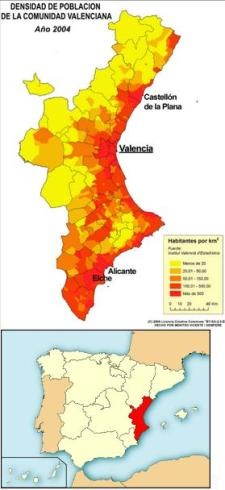ArcView 3x users love GvSIG
Today I have been in an institution of cartographic production, of those who learned very well to program with Avenue, the initial intention was to present alternatives to the formal disappearance of ArcView 3x and the limitation of moving to ArcGIS 9.
 It would have been more complicated if they had been Geomedia users to whom the comparison it would have been more extensive, or they had silver available and were able to acquire ArcGIS or lower cost Manifold applications. In a few minutes of exposure they have been satisfied with the benefits of GvSIG; Now I summarize what I think has convinced you:
It would have been more complicated if they had been Geomedia users to whom the comparison it would have been more extensive, or they had silver available and were able to acquire ArcGIS or lower cost Manifold applications. In a few minutes of exposure they have been satisfied with the benefits of GvSIG; Now I summarize what I think has convinced you:
1 It looks so much like ArcView and AutoCAD
The fact that GvSIG has such a similarity with ArcView 3x in its interface based on views, tables and layouts has been decisive. Then see that the way to build data with a resemblance to AutoCAD, with sufficient editing commands has influenced; Of course, we know that ArcView 3x users were highly critical of the difficulty in editing data accurately and the lack of topology.
2. It's free, or almost
The correct word is free to use, however the way they have visualized it is that to distribute it there is no need to buy a license. This institution developed some features on Avenue, and they were considering the possibility of moving to ArcGIS 9, what happens is that for the users of their applications it is difficult to acquire this type of license ... especially since they are low-income municipalities.
Of course, for this I have promised to give you a GvSIG course called "GvSIG for ArcView users" ... I think it will be interesting.
acquiring ArcGIS, ArcGIS Engine, ArcObjects, Gis Server, and ArcSDE cost them about $ 57,000. Now they will only invest $ 2,000 in a Java course, $ 1,000 in a GvSIG course and $ 2,000 in the development of good manuals ... It is not free of course, but it will only cost $ 5,000 because they have programmers who handle Java and know with their eyes closed the use of ArcView.
3. Multi-system compatibility
When developed on Java, it runs on Mac and Linux, it means that they would stop suffering from the service pack that supports the system they were thinking of implementing.
For now the decision has been made, they will only make a work plan that reflects the stage of training, development and implementation of the new version of their system. Best of all, they hope to systematize the experience into a post.
So yes, ArcView users like GvSIG. Two months from Be testing, is already producing results.
There I tell you how I'm doing.







gvSIG is not free, but it is paid with our taxes by some public administrations.
What is unacceptable is that a software in which so much money and time has been invested is so far behind the competition's software (read qGIS or similar). And all because of the Spanish "custom" of doing everything from scratch, without reusing much of what has already been done in the community (such as GRASS, for example).
It's easy, with public money. How many of these companies that collaborate in gvSIG (lease IVER, prodevelop and others), do it as an investment and do not really charge anything?
I sure hope to keep you posted ...
all the best
To think that free software is free is one of the most classic errors that can occur around the SL. If that were so, I would have spent two years living off the oxygen I breathe, since a large part of my work dedication is for the gvSIG project and evidently my bosses are not so philanthropic. That is, gvSIG and many other SL projects live from institutions and companies that INVEST in these projects with very different minds, some disinterested and others not, but always LÍCITOS.
In the project there is always the desire to collaborate, not only in development but also in documentation, so if the cartographic production institution you mention wants to participate in the project with those "good manuals", I am sure that my project partners will welcome you with open arms!
I believe that if each organization that adopts gvSIG contributes a little to the project with manuals, tutorials, extensions or whatever, the benefit will revert very quickly to the community and we will achieve that "if everyone plays, everyone wins". It is a clear difference with respect to adopting proprietary technologies and that makes the SL a true "hotbed" of innovation and development.
And as I have a nice comment I'm going to post it on my blog
From the gvSIG team, we can only thank you for informing us of the good and the bad that users find in the application, which will always help us to improve. Thank you very much!
As for the edition, little by little it is going to be improving with the aim of having the best possible. And the topology is already in its final stages of development, so in future versions will be for all those who need it.
As for the course you are going to give, in case you need it, on the “classic” gvSIG website (www.gvsig.gva.es) you have a lot of material in the documentation section; On the gvSIG community website (www.gvsig.org), in the “unofficial downloads” area, you can find a course that has been donated by the community.
Regards!
Alvaro